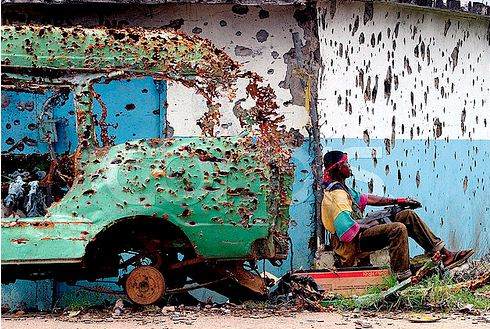So, to alleviate issues I have with aspects of the regimental system as written, I've been toying with a variation, loosely inspired by the Soviet Red Army.
First off, my degree is in military history, and I spent some time in the uniform myself. This stuff is near and dear to me. So with that personal bias, there are a few things in fluff that just don't work for me. Biggest points that stick are logistics, and the 'use 'em until they're used up' approach the IG takes. Doesn't work for me, fictional setting or not. However, I love the setting, even though I just found 40k a couple months ago. So here is my fix. It's almost entirely fluff, but still. . .
The IG divides active regiments into four categories. Category A units are the bulk of the regiments from the 'famous' worlds. Cadian shock, Krieg Death Korps, Elysian Drop, Valhallan Ice Warriors, and the like fall into the category. These troops are more important in both a practical and a psychological way. Their very presence can bolster the morale of nearby units. About to be overrun? Buck up boys, the Cadians are coming. Category A means that the home world will send reinforcements to the regiments as needed, keeping them up at strength with a core of seasoned veterans. Over time, this will only increase the effectiveness of the units as the number of veteran guardsmen in a given regiment rises. Category A also means that a regiment has a priority to absorb the remnants of broken regiments to keep up their strength until the latest homeworld levy arrives, and a priority on logistical support.
Category B units do not come from a famous world, but have gained a similar status to Category A based on their performance or value (or politics, or clerical error, or good press). While B status will be given only to individual regiments on a case by case basis, if one world did have enough of its regiments raised to B status, that world might hope that its status be eventually raised to A.
Category A and B regiments do not, of course, last forever. WIth their higher level of skill and experience, they are in high demand. It is not uncommon for such a regiment to move rapidly from active theatre to active theatre, staying one step ahead of homeworld reinforcements will seeing almost relentless combat. When such a regiment is lost, of course, the colors are sent home and the regiment is reactivated, with new faces but old traditions.
Far more common, of course, are Category C regiments. These are regiments as presented in the core book. Little if any reinforcement, catch as catch can for logistical support, simply used and used and used again until the regiment is a non functional entity, then broken up to reinforce other regiments or used to colonise a new world. C units are far and away the most common.
Finally, Category D regiments are the scum and dregs, the units intended to be used, used up, and forgotten. Penal legions are here.
As I see it, homebrew units should start as C, and work through valor, sheer guts, more than a bit of luck, and some social moves towards B status. This would give a fluff reason for a PC regiment to come to a point where they can keep up their strength for a longer campaign.
As for logistics, I'm still mulling things over. I don't think I'm up for creating crunch for it yet, or for that matter that crunch is really needed. However, support units are needed. It is unlikely that many players would want to roleplay one. Who wants to play the valiant clerks of the Cadian 11573rd Logistical Support regiment, responsible for feeding, clothing and supporting an entire division? Or the 4077th MASH? However, for GMs that like good solid background for campaigns, such a thing might be appreciated.
My thoughts, so far, run like so. We have a world, probably an agrarian one, with no warrior tradition whatsoever. Call it Elkenor. This world still produces IG regiments, but their troops have a time honored tradition of deeply sucking, followed by decimation. In the last two hundred years, however, Elkenor regiments have been based on services the hard working and practical farmers and laborers of this world excel at. Support. An Elkenor regiment provides large scale water purification, food preparation, production and distribution of kit items such as boots, uniforms, E tools, web gear, canteems, etc, medical services, basic vehicle support, combat engineers, ground transportation, and all the other myriad services combat regiments require but have difficulty providing for themselves. Larger Elkenor regiments even have a small MASH unit attached.
Furthermore, Elkenor regiments are designed to break up into company sized formations with all or at least most, of these capabilities. These companies can be attached to combat regiments on independent duties, greatly increasing their capabilities as well as the length of time they can be deployed.
I'm not sure how to go about statting up the Elkenor Support regiments, or even if I need to. Mostly, they offer background detail and roleplay opportunities. PC units would depend on them for support, scrounge and trade with them for extra supplies, and protect them from enemy breakthroughs. I see them as almost a mobile tent city, providing a brief escape from combat and a taste of slightly more normal life.
It would be nice to have some stats for appropriate ground vehicles though. A HUMVee equivelant, 2 1/2 and 5 ton trucks, half tracks, field ambulances and the like. I may try to make combat engineer (or sapper) and support specialists, just to have the option
